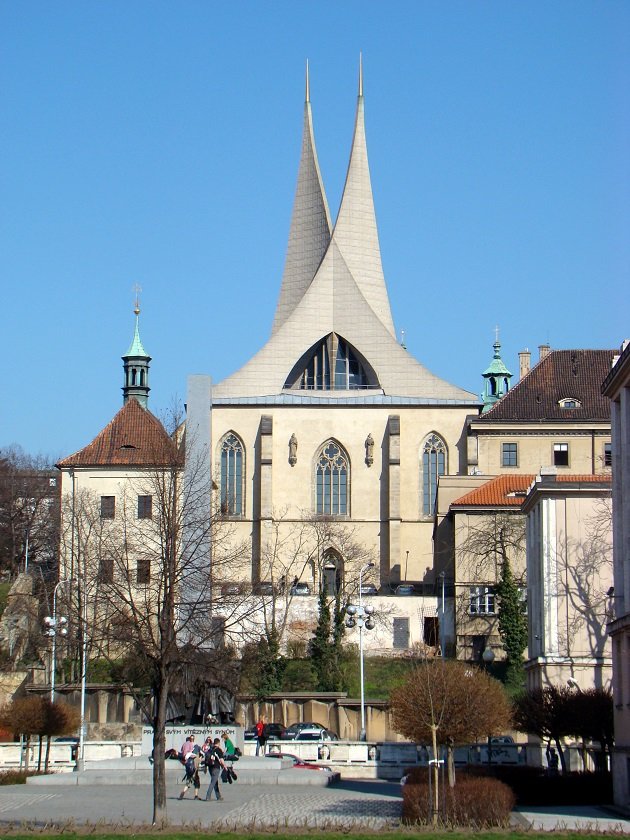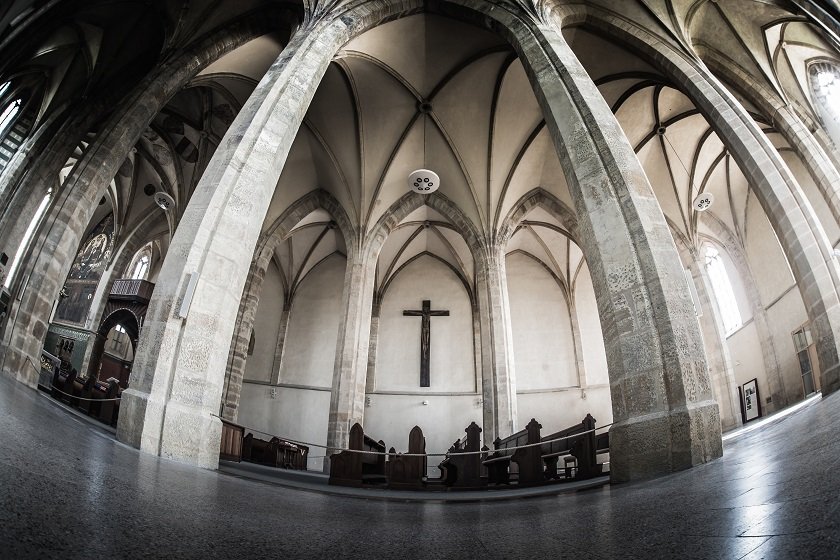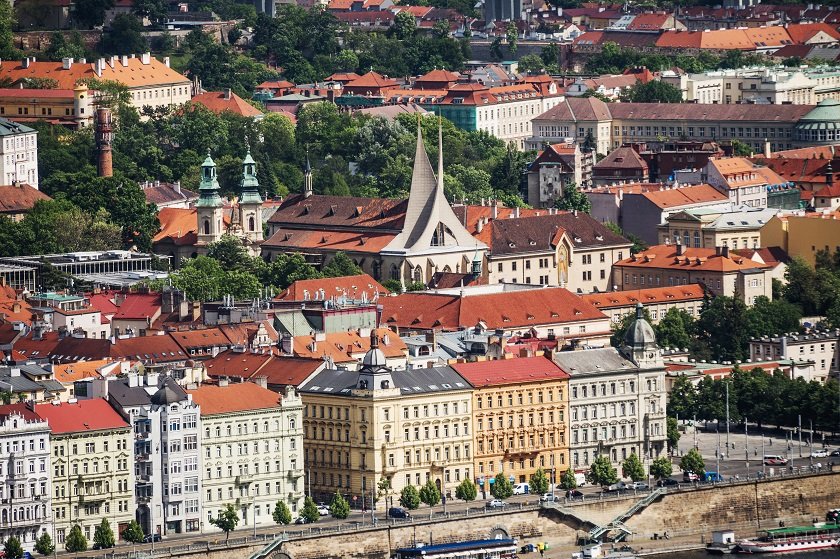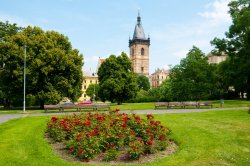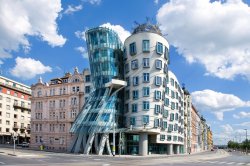Emmaus Monastery
The monastery is officially called the Abbey Church of the Blessed Virgin Mary, St Jerome and Slavic Saints (or just the Na Slovanech Monastery). However, more often it is called by its second name – the Emmaus Monastery. The only Slavic monastery from the time of Charles IV is situated in Podskalí, north of Vyšehrad, just a few metres from Charles Square.
It was founded by Charles IV in 1347, who later invited monks from the Balkans who used the Old Slavonic language as their liturgical language. After 24 years, a new church building was added to the site, as the monastery’s capacity was insufficient. After its foundation, it became the centre of Slavic education and many significant literal works were created there. For example, the Reims Gospel, which was part of the Reins Cathedral treasury and was used in the coronation ceremony of French kings.
The builder of the monastery is unknown, but it is known that the construction cost as much as the construction of Charles Bridge.
Useful information for visitors
Public transport connections
Moráň tram stop
Opening hours and admission
For information about the admission fees and opening hours of the Emmaus Monastery, visit the official website. The main entrance to the monastery is on Vyšehradská Street, about 50 metres from Charles Square.
Interesting facts about Emmaus Monastery
The Emmaus Monastery got its name from the fact that the Gospel of Christ’s meeting with his disciples at Emmaus was read in the monastery on the day of its consecration. The church underwent several major changes over the years – first it was Gothic, then its façade was reconstructed in Baroque style, and finally it was regothicised with neo-Gothic towers. Before the end of WWII in February 1945, both the monastery and the church were bombed and the church lost its towers due to a fire. It took twenty years before a new roof was built according to the design by František M. Černý. He replaced the towers with two modern concrete towers with golden spikes.
Today, visitors can see the cloister with wall paintings dating back to the 14th century, the Baroque refectory, the Imperial Chapel and the Church of the Blessed Virgin Mary, St Jerome and Slavic Saints. The sacral spaces are used for church services. In 1990, the Emmaus Monastery was returned to the Emmaus Benedictines, who returned from their exile in Italy.
